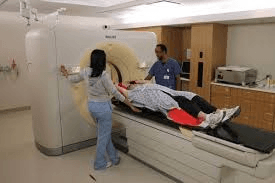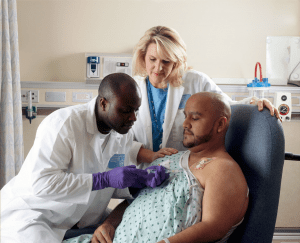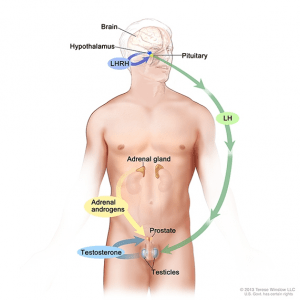How is cancer treated?
Specific treatment for cancer will be determined by your healthcare provider based on:
· Your overall health and medical history
· Extent of the disease–type, grade, stage, and location
· Your tolerance for specific medicines, procedures, or therapies
· Expectations for the course of the disease
· Your opinion or preference
What are the goals of treatment?
· Remission (or cure)
· Prevention of cancer recurrence
· Prolonging life (when remission/cure is not possible)
· Palliation (Palliation is treatment for a symptom of the cancer, such as pain. It is not a treatment for the cancer itself. The goal of palliation treatment is to improve the quality of life, and provide comfort and support.)
What are the common types of cancer treatment?
Listed below are the conventional, primary methods of treating cancer:
· Surgery
· Radiation therapy
· Chemotherapy
· Hormone therapy
· Immunotherapy/biological therapy
Cancer may also be treated with:
· High-dose therapy with stem cell rescue. High dose of chemotherapy with or without radiation therapy is are given to treat the cancer. The dose of treatment is so high that the body’s bone marrow cannot recover. The stem cell rescue is a way to replace the body’s bone marrow to provide a functioning blood and immune system.
Radiation therapy

Radiation therapy (also called therapeutic radiology or radiation oncology) uses X-rays, gamma rays, and charged particles to fight cancer. Like surgery, radiation therapy is used in several ways depending on the type and location of the cancer. Certain levels of radiation work to destroy cancer cells or prevent cells from growing or reproducing. This treatment may provide a cure for cancer, control the disease, or help relieve its symptoms. Most radiation treatments won’t make you radioactive. Talk to your doctor about any precautions you should take when getting radiation therapy.
Although each hospital may have specific protocols, radiation therapy usually begins with these procedures:
· Simulation process. After a physical exam and a review of your medical history, your treatment team maps out the position you will be in for each treatment and the exact location on your body (referred to as treatment field or port) where the radiation will be given. Sometimes, the area on your body that requires treatment will be marked to make sure radiation is given properly. The treatment team may also make molds, headrests, or other devices that help to position you during your treatment. Imaging studies, such as CT scans, MRI scans, or PET scans, may also be performed during the simulation process to help plan how to direct the radiation during your treatments.
· Treatment plan. Once the simulation process is completed, the radiation oncologist will determine your treatment plan, including the type of machine to use, the amount (dose) of radiation that is needed, and the number of treatments that will be given.
Chemotherapy

Chemotherapy refers to the use of medicines to treat cancer. It has been used for many years and is one of the most common treatments for cancer. In most cases, chemotherapy works by interfering with the cancer cell’s ability to grow and reproduce. Different groups of medicines work in different ways to fight cancer cells. Chemotherapy may be used alone for some types of cancer or in combination with other treatments such as radiation or surgery. Often, a combination of chemotherapy medicines is used to fight a specific cancer. Certain chemotherapy medicines may be given in a specific order depending on the type of cancer they are being used to treat.
While chemotherapy can be quite effective in treating certain cancers, chemotherapy medicines reach all parts of the body, not just the cancer cells. Because of this, there can be many side effects during treatment. Being able to anticipate these side effects can help you and your caregivers prepare for and manage them.
How is chemotherapy given?
Chemotherapy can be given:
· As a pill to swallow
· As an injection (shot) into the muscle or fat tissue
· Intravenously (directly to the bloodstream; also called IV)
· Topically (applied to the skin)
· Directly into a body cavity
To reduce the damage to healthy cells and to give them a chance to recover, chemotherapy is usually given in cycles. Chemotherapy may be given daily, weekly, every few weeks, or monthly, depending on your situation.
Chemotherapy is usually given in an outpatient setting. This includes a hospital, clinic, or healthcare provider’s office. Patients receiving chemotherapy will be watched for reactions during treatments. Since each chemotherapy treatment session may last for a while, patients are encouraged to take along something that is comforting, such as music to listen to. It is also recommended to bring something to help pass the time, such as a deck of cards or a book. Since it is hard to predict how a patient will feel after chemotherapy, it is important to have someone drive the person to and from the appointment.
Hormone therapy

Hormones are chemicals made by glands, such as the ovaries and testicles. Hormones help some types of cancer cells grow, such as breast cancer and prostate cancer. In other cases, hormones can kill cancer cells, slow their growth, or stop them from growing. Hormone therapy as a cancer treatment may involve taking medicines that interfere with the activity of the hormone or stop the production of the hormones. Hormone therapy may involve surgically removing a gland that is making the hormones.
How does hormone therapy work?
Your doctor may advise a hormone receptor test to help determine treatment options and to help learn more about the tumor. This test can help to predict how the cells will react to hormones.
The hormone receptor test measures the amount of certain proteins (called hormone receptors) in cancer tissue. Hormones (such as estrogen and progesterone) can attach to these proteins. If the test is positive, it means the hormone is probably helping the cancer cells grow. In this case, hormone therapy may be given to block the way the hormone works and help keep them away from the cancer cells (hormone receptors). If the test is negative, the hormone does not affect the growth of the cancer cells, and other cancer treatments may be given. Always discuss the results of the hormone receptor test with your doctor.
If the test shows that the hormones are affecting your cancer, the cancer may be treated in one of following ways:
· Treating cancer cells to keep them from getting the hormones they need to grow
· Treating the glands that produce hormones to keep them from making hormones
· Surgery to remove glands that make the hormones, such as the ovaries that make estrogen, or the testicles that make testosterone
The type of hormone therapy a person gets depends on many factors, such as the type and size of the tumor, the age of the person, the presence of hormone receptors on the tumor, and other factors.
Immunotherapy/Biological Therapy
Biological therapy (also called immunotherapy, biological response modifier therapy, or biotherapy) uses the body’s immune system to fight cancer. The cells, antibodies, and organs of the immune system work to protect and defend the body against foreign invaders, such as bacteria or viruses. Doctors and researchers have found that the immune system might also be able to both determine the difference between healthy cells and cancer cells in the body, and to eliminate the cancer cells. (By itself, the immune system is not always good at destroying cancer cells; if it were, people would not get cancer.)
Biological therapies are designed to boost the immune system, either directly or indirectly, by assisting in the following:
· Stop, control, or suppress the processes that allow cancers to grow
· Making cancer cells more recognizable by the immune system, and therefore more susceptible to destruction by the immune system
· Boosting the killing power of immune system cells
· Changing the way cancer cells grow, so that they act more like healthy cells
· Stopping the process that changes a normal cell into a cancerous cell
· Enhancing the body’s ability to repair or replace normal cells damaged or destroyed by other forms of cancer treatment, such as chemotherapy or radiation
· Preventing cancer cells from spreading to other parts of the body
Biological therapies can be used alone to treat cancer or can be combined with other treatments such as chemotherapy and radiation therapy.




Which is the best cancer hospital for immunotherapy cancer treatment in India?